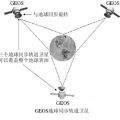Communication and computation are often viewed as separate tasks. This approach is very effective from the perspective of engineering as isolated optimizations can be performed. However, for many computation-oriented applications, the main interest is a function of the local information at the devices, rather than the local information itself. In such scenarios, information theoretical results show that harnessing the interference in a multiple access channel for computation, i.e., over-the-air computation (OAC), can provide a significantly higher achievable computation rate than separating communication and computation tasks. Moreover, the gap between OAC and separation in terms of computation rate increases with more participating nodes. Given this motivation, in this study, we provide a comprehensive survey on practical OAC methods. After outlining fundamentals related to OAC, we discuss the available OAC schemes with their pros and cons. We provide an overview of the enabling mechanisms for achieving reliable computation in the wireless channel. Finally, we summarize the potential applications of OAC and point out some future directions.
翻译:通讯和计算通常被视为相互独立的任务。从工程学的角度来看,这种方法非常有效,因为可以进行隔离的优化。但是,对于许多计算导向的应用,主要的兴趣是设备本地信息的函数,而不是本地信息本身。在这种情况下,信息理论结果表明,利用多址通道中的干扰进行计算,即空中计算(OAC),可以提供比分离通信和计算任务更高的可实现计算速率。而且,OAC和分离之间在计算速率方面的差距随着参与节点的增加而增加。鉴于这种动机,在本研究中,我们提供了一份关于实际OAC方法的全面调查报告。在概述与OAC相关的基本原理之后,我们讨论了可用的OAC方案及其优缺点。我们提供了实现无线信道可靠计算的使能机制概述。最后,我们总结了OAC的潜在应用,并指出了一些未来方向。



